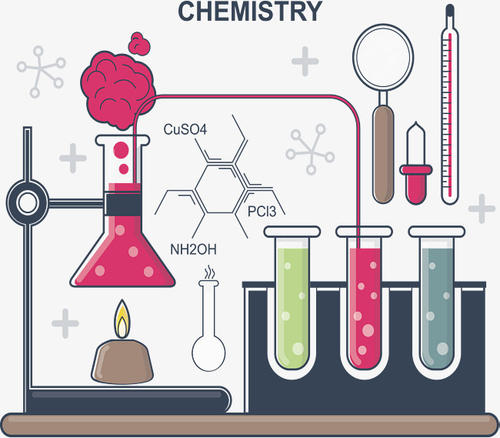化工翻译需要实现尽可能完美的表达,需要将原文的意思准确、通顺、优美地体现出来。专业术语必须依据约定俗成的原则,采取已经普遍接受的译法,不能直译,更不能任意创造。

Amino Acids to Proteins
从氨基酸到蛋白质
生命几乎就是蛋白质的杰作。蛋白质让生物得以生长和繁殖,生长和繁殖是生命最基本的特征。蛋白质赋予了生物外形和力量,以及在许多情形中的运动功能。蛋白质还是细胞通讯的基础,也是细胞膜的组成部分(正是细胞膜将细胞和细胞器与它们的环境分隔开)。在细胞中,蛋白质无处不在,行使着几乎所有功能。本章我们将学习蛋白质的分子组成,了解简单小分子是如何连接在一起产生具有复杂形状和超乎寻常功能的大分子的。
Protein Composition
蛋白质的组成
Proteins are polymers of small molecules called amino acids(Figure 1.1).It is convenient to think of an amino acid as a carbon atom attached to four different chemical groups. Three of these are all always the same:an amino group,a carboxyl group,and a hydrogen atom. The fourth group is generally termed the side chain,or R group,and varies between different amino acids. There are 20 different amino acids commonly used to make proteins,and all 20 have different R groups. R groups have various sizes and chemical properties(Figures 1.2 and Figures 1.3).
蛋白质是由称为氨基酸的小分子组成的聚合物(图1.1)。可以很方便地把氨基酸看成是由四个不同的化学基团连接到一个碳原子上而形成的结构。其中三个基团总是相同,即氨基、羧基和氢原子。第四个基团通常被称为侧链,或R基团,它随氨基酸的不同而有变化。通常有20种不同的氨基酸被用来生产蛋白质,它们均具有不同的R基团。R基团大小不一,其化学性质也不同(图1.2和图1.3)。
Amino acids are joined to each other by combining the amino end of one with the carboxyl end of another(Figure 1.4).Because all amino acids have these two ends,any amino acid can join to any other amino acid. The polymer that results from these combinations is linear,meaning that there are no branchpoints. Proteins can be composed of any combination of the twenty amino acids,in any number,attached in any order. In fact,this flexibility in composition is necessary to produce the wide variety of proteins that are used in nature.
氨基酸可以通过一个氨基酸上的氨基与另一个氨基酸上的羧基结合而互相连接起来(图1.4)。由于所有氨基酸都具有这两个基团,因此任何氨基酸都可以与任何其他氨基酸相连接。这种结合形成的聚合物是线性的,意味着它们没有分支。蛋白质可以由20种氨基酸以任何组合、任何数目和任何顺序组成。事实上,这种在组成上的灵活性对于产生在自然界中用到的种类繁多的蛋白质是必需的。
The bond that joins two amino acids in a protein is called a peptide bond. It is a kind of amide bond. The peptide bond is quite strong and rigid,and does not allow rotation. This is because the double-bond joining the carbon and oxygen is also distributed between the same carbon and the adjacent nitrogen. The redistribution of electron density gives a partial double-bond character to the carbon-nitrogen bond,which is the core component of the peptide bond. This partial double-bond character prevents the peptide bond from rotating easily.
在蛋白质中连接两个氨基酸之间的键叫做肽键。它是一种酰胺键。肽键很强并具有刚性,不允许旋转。这是因为连接碳和氧的双键也在同一个碳和邻近的氮之间进行分配。电子密度的重新分布使得碳-氮键具有部分双键的特性,而碳-氮键是肽键的核心成分。这种部分双键特性防止了肽键发生自由旋转。
Although peptide bonds are rigid,amino acid chains are flexible because other bonds within each of the amino acids can rotate(Figure 1.5).As a result,although proteins are linear,they are not one-dimensional. The linear molecule bends,folds,and twists to form complicated three-dimensional structures. We explore protein structures in the next section.
虽然肽键具有刚性,但是氨基酸链还是容易弯曲的,因为位于氨基酸里面的其他键都可以发生旋转(图1.5)。结果,虽然蛋白质是线性的,但它们并不是一维的。线性的分子会发生弯曲、折叠和扭曲从而形成复杂的三维结构。我们将在下一节中去探寻蛋白质结构方面的知识。
The ends of a protein have unique chemical properties. On one end,an amino group is left unreacted,unlike the other amino acids in the protein that have been polymerized. This end of the peptide is called the N-terminus(Figure1.5).On the other end,a carboxyl group remains unreacted. This end is called the C-terminus. Under cellular conditions,the N-terminus is usually positively charged,and the C-terminus is negatively charged. A protein’s termini provide a convenient way to indicate directionality. To indicate the position of an amino acid A in a protein relative to amino acid B,for example,we might say,“A is 5 amino acids away from B in the N-terminal direction.”
蛋白质的末端具有独特的化学性质。在一个末端上保留了一个没有发生反应的氨基,它与其他已经发生了聚合的氨基酸不同。这个末端叫做N-末端(图1.5)。在另一个末端上有一个羧基保持着未发生反应的状态。这个末端叫做C-末端。在细胞中,通常N-末端带有正电荷而C-末端带有负电荷。蛋白质的末端为说明蛋白质的方向提供了方便。例如,要说明蛋白质中氨基酸A相对于氨基酸B所处的位置,我们可以说:“A位于B的N-末端距离5个氨基酸之处。”
Note that in addition to the term protein,the term polypeptide can be used to refer to polymers in which amino acids are connected by peptide bonds. The distinction between these terms is not always clear. Polypeptide is a more general term that applies any time amino acids are polymerized by peptide bonds,even if the polymer is made synthetically and has no function.‘Protein’is more often used to describe one or more polypeptides that have a function in nature. The term peptide may also be used instead of‘polypeptide’or‘protein’,most frequently to refer to short polymers of amino acids.
请注意,除了蛋白质这一术语外,多肽也可以用来指由肽键连接起来的聚合物。这两个术语之间的区别并不是很清楚。多肽是更普遍的术语,它适用于任何氨基酸经由肽键得到的聚合物,即使此聚合物是人工合成并且是没有功能的。“蛋白质”更经常地用来描述自然界中具有功能的一种或多种多肽。在描述氨基酸的短聚合物时,术语肽也常常用来代替“多肽”或“蛋白质”。

 苏ICP备16061228
苏ICP备16061228